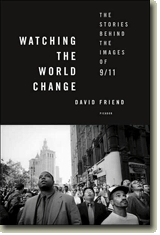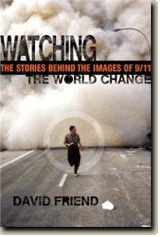April 2008 Archives
« Previous · Home · Next »
April 26, 2008
THE PENTAGON'S FITS AND STARTS
PAKISTAN. Reports coming out of the Pentagon suggest that at least part of the reason we can’t find Osama bin Laden has been due to internal squabbling in the U.S. military. This week AP’s Robert Burns reported that even though Defense Secretary Robert Gates has been trying to persuade the Air Force to free up more of its camera-equipped Predator drones to swoop and snoop over possible al-Qaeda hideouts in Pakistan, the Air Force has been resistant. On Monday Gates groused that getting the Air Force to dispatch additional unmanned Predators has been “like pulling teeth . . . My concern is that our services are still not moving aggressively in wartime to provide resources needed now on the battlefield.”
According to Burns, the fleet of pilot-less surveillance aircraft has “grown 25-fold since the terrorist attacks of Sept. 11, 2001, to a total of 5000. Gates has been trying for months to get the Air Force to send more [but the request has been stalled, says Gates] ‘because people were stuck in old ways of doing businesss.’”
IRAN. And just when you thought the Bush administration was ducking into lame-duck hibernation, there are real indications that we are creeping toward a military confrontation with Iran. Yesterday, Joint Chiefs of Staff Chairman Michael Mullen turned up the war-rhetoric volume when he bluntly stated that the Pentagon is planning for “potential military courses of action” against the regime in Tehran. Iran, he said, “is hell-bent on acquiring nuclear weapons. . . . The military option must be kept on the table.”
Sound familiar, kids?
Thank our lucky stars that only Congress has the Consitutional authority to declare war. Last I checked...
STYLE VS. SUBSTANCE AMONG AMATEUR AUTEURS
Virginia Heffernan’s essay in this weekend's The New York Times Magazine explores the new aesthetics of digital photography as practiced and perfected on the photo-sharing Web site, Flickr. Some of the top amateur digital-photo auteurs, says Heffernan, “have mounted a case against verite rawness, in favor of posing, cropping and special effects. . . . Just as certain ne’er-do-well writers have found themselves in blogging, and failed filmmakers have taken to online video, these seemingly out-of-step artists have both invented and mastered the Flickr photograph. Other photographers have added still more levels of processing – including otherworldly contrasts achieved with high-dynamic-range photography – to the quintessential Flickr image, and it’s becoming only more eye-popping and stylized.”
Yet again, the message is: In this PhotoShop world, woe is photojournalism.
April 23, 2008
LONG SILENCE
Apologies for my silence. While the Pope has been in America, meeting with some of the families of the victims of the September 11 attacks, I have been in the Pope’s homeland (in Germany and also in the Czech Republic), dwelling on the atrocities of the Second World War while visiting sites like Dresden, Potsdam, and Berlin.
Apropos of religion and September 11, my son recently pointed out a Buddhist perspective on the attacks and the U.S. military response, written by David Loy, a Japan-based academic: “On the Nonduality of Good and Evil.”
If the beginning seems a bit familiar, it is based on an email message that Loy sent out in the days after the attacks, an email that hit a public nerve and was immediately forwarded around the world, virally. While some of the observations are geopolitically naive, even dangerously so, there are certainly larger truths to be gained from Loy’s thesis: that civilization must find a way to break the escalating cycle of violence triggered by Islamist fundamentalism and by the West’s long-term designs on (and military response to protect) Middle East oil supplies.
April 6, 2008
THE NEWSEUM: 9/11, VIETNAM - AND MEMORY
This week I visited the about-to-be-inaugurated Newseum – the museum dedicated to chronicling the History of the News. The impressive, airy facility with its vaulting atrium has been relocated from Arlington, Virginia, to Washington D.C.’s Mall. Most germane (for the readers of this Web site) was the 9/11 Gallery, which features a wall of newspaper front pages from 9/12; a transfixing documentary that chronicles news coverage on September 11 (with memorable testimony from Thomas Franklin, who took the famous Ground Zero flag-raising photograph); and a display of the damaged camera gear of Bill Biggart, one of the two working photographers who perished in the attacks.

Most arresting, for me, was the main artifact in the room - a portion of the mangled communications spire from the apex of the Trade Center, still affixed to the top of the tower itself. (The dedication page of Watching the World Change honors the memory of eight working journalists who died that morning - two photographers on the street and six TV engineers, monintoring that very communications spire, ensconced in the lofty reaches of the WTC: Bill Biggart, Gerard Coppola, Donald J. DiFranco, Steven Jacobson, Robert Edward Pattison, Glen Pettit, Isaias Rivera, and William Steckman. The book is dedicated to my parents and to photographer Harry Benson, with whom I spent two days down around Ground Zero the week of September 11.)
The real reason for my visit was that last Thursday the Newseum hosted a solemn ceremony during which the remains of four Vietnam-era photojournalists lost in Laos, in 1971, were finally laid to rest, interred in a crypt at the foot of the Journalists Memorial, an enormous, three-story wall of carved glass bearing the names of working press members killed while covering the news, from 1837 to now.
The most poignant moment of the day came when my friend Russell Burrows, son of Life photographer Larry Burrows, spoke to the assembled. I’ve rarely been prouder of our profession than I was when I heard Russell remark, as reported on the Web site of Photo District News:
"They chose to be there," said Russell Burrows. "It was the highest manifestation, I think, of their profession." Speaking of the memorial, Burrows said, "I'd like to regard this as kind of a family chapel."
The photojournalists’ remains had been discovered on a hillside in Laos in the mid-90s, thanks to the efforts of photographer Horst Faas (picture editor for the Associated Press in Saigon during the conflict) and Richard Pyle (the AP’s Saigon bureau chief). In 1999 I assigned Pyle to write about the search for the remains for Vanity Fair, which published his gripping story. His tale, which I described in a VF.COM posting this week, eventually served as the basis for the book, Lost Over Laos, co-authored by Pyle and Faas.
MEANWHILE...
CORDON RED. The New York Daily News discloses that a new proposal for beefing up security around the World Trade Center area would close or restrict "at least 24 blocks on eight major streets" and create what the paper calls an anti-terror Ring of Steel at the site.
THREE NEW BLOGS. I recommend James Danziger’s new photo-centric blog, “The Year in Pictures.” His recent post on Andrew Bush’s California Car Window series is a flashback to that 90s, devil-may-care buzz at the Cusp of Armageddon, that flush-with-Clintonian Good Times Meets Hollow, Alienated Edge. I remember first encountering Bush’s work in French PHOTO, back in the day.
Photography and picture editor Geoffrey Hiller emailed me (about a weak link on the site) and, in passing, mentioned his own documentary photography blog, which is quite an eyeful: Verve Photo.
And the Blurberati Blog (which bills itself as "Passionate about all things book: design, content, sharing, life...") praises a piece by yours truly on the Smithsonian Institution's new photography initiative: Click.
COMIC RELIEF… Finally, Your Faithful Blogger has posted a satirical ditty (about 3 a.m. White House Phone Calls) at VanityFair.com.
REMEMBERING ROKO
This e-mail comes from Oswego, New York. The writer, Kevin Caraccioli, refers to a blog post on this Web site about Roko Camaj, the World Trade Center window washer pictured below…
“I admire your work. I recently came across your book, Watching the
World Change: The Stories behind the Images of 9/11.
“For the better part of 5 years, I have been attempting to make contact with the family of Roko Camaj, the window washer at the WTC who lost his life on 9/11. Admittedly, my efforts have been minimal out of an abundance of caution and sensitivity (I can not imagine myself in the same situation that they find themselves in). I have produced a short tribute film with Roko and the WTC as the central themes…”

PHOTO COURTESY OF THE CAMAJ FAMILY
“…In circa 1978, my family and I took a trip into NYC and the WTC. It was Easter season (we typically traveled to Greenwich, Conn. to spend the holiday with relatives). Our visit to the WTC was recorded with a 8mm home movie recorder. We were amused by the window washer, on the outside of Windows on the World, looking in at us. It was one of those special memories that always sticks with you.
“After the events of 9/11, I was reading some of the profiles of the victims that regularly appeared in the weekly news periodicals. One profile struck me hard. It told the story of the window washer, Roko Camaj, and was accompanied by a photograph of him taken in recent years. I immediately searched our families home movie collection, queued up the tape with our visit to WTC and saw the now-chilling images of Roko Camaj, some 23 years earlier.
“I am a lawyer by profession, but have always dabbled in artistic projects. I decided to put together a video tribute to the WTC and Roko Camaj, who provided me and my family with a memory of a life time that day. I searched for the perfect music to accompany my video and found it in a piece by pianist Billy Childs entitled, ‘Hand Picked Rose of a Fading Dream.’
“This week, I had a chance to meet Billy Childs and present him with my piece. He has given me permission to use his music with my video and present this tribute to the Camaj family. I would very much like to do so and ask for your assistance in making that connection.
“Please let me know if this is something you can help me with. I would be most grateful for any guidance you can provide me. I am happy to send you a copy of the piece, its about 4 minutes long.
“I look forward to hearing from you at your earliest opportunity.”
Sincerely,
Kevin Caraccioli
DEAR KEVIN: At your service! I’ve lost touch with the Camaj family but will surely be in touch with them soonest...


